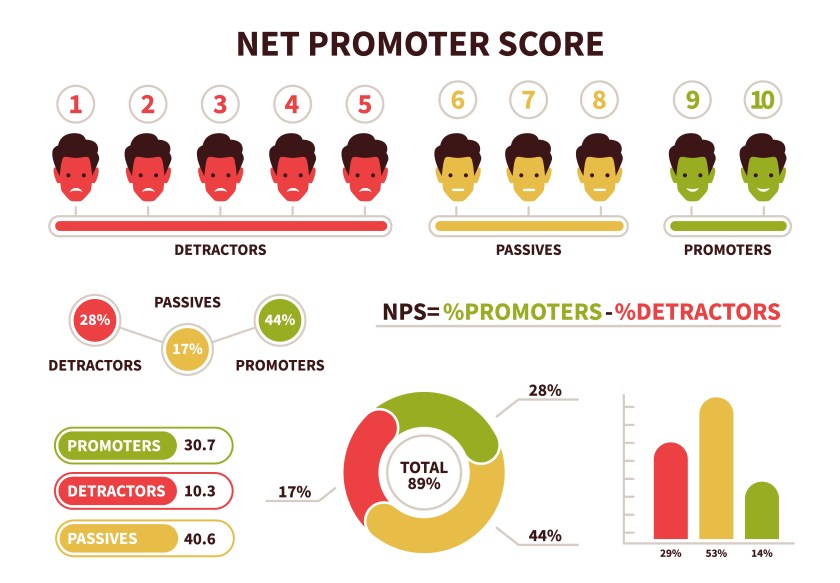Are you tracking all the important product marketing KPIs? If not, you’re missing out on key insights into your products’ performance. In this blog post, we’ll outline 13 essential KPIs you need to track to ensure your product marketing efforts are successful. Not only will tracking these KPIs help you optimize your product marketing strategy, but it will also give you a better understanding of your customers and how they interact with your products. So read on to learn what they are and how to track them!
What is a Product Marketing KPI?
A product marketing KPI is a key performance indicator that helps you measure, track, and optimize your product marketing strategy and execution. You can track different product marketing KPIs, but which are most important will vary depending on your specific goals and objectives.
Some of the most common product marketing KPIs include:
- Sales figures
- Market share
- Customer satisfaction ratings (customer lifetime value)
- Product marketing metrics
- Lead generation metrics
- Conversion rates
When the product marketing efforts are effective, it will increase sales and market share. Product marketing aims to create demand for a product or service through marketing initiatives and then convert that demand into sales.
Few things that should be considered while setting up the KPIs
Define Your Product Marketing Goals
When it comes to product marketing, what are your specific goals? Do you want to increase sales of a particular product? Boost market share for your company? Improve customer satisfaction ratings? Once you know your goals, you can start identifying which KPIs will be most important in measuring and achieving them.
Know your audience
Understanding your target audience and what they care about most is also important. What are their needs and pain points? What motivates them to make a purchase? Knowing this information will help you create marketing messages that resonate with them and ultimately leads to conversions.
Do you need help tracking your product marketing KPIs?
Contact Growth Hackers
Set up a tracking system
Once you know which KPIs you want to track and why you need to set up a tracking system that will allow you to gather this data. This could be as simple as keeping an Excel spreadsheet or using marketing automation software or CRM tools.
Analyze and optimize
Finally, it’s important to analyze your KPIs regularly and make necessary changes or optimizations based on the results. With the right product marketing strategy in place, you can increase sales, boost market share, and improve customer satisfaction for your company!
If you’re looking to track key performance indicators for your product marketing strategy, start by considering the sales figures, market share, customer satisfaction ratings, and other metrics outlined above. And when you’re ready to set up a tracking system, be sure to enlist the help of marketing automation software or other tools that can help you gather and analyze this data easily.
What Are the Benefits of Tracking Product Marketing KPIs?
You may be wondering what kind of information KPIs provide. There are many benefits to tracking product marketing KPIs, including:
Helping you optimize your product marketing strategy
When you track your product marketing KPIs, you can see which areas are working well and which need improvement. This allows you to focus your efforts on the areas that will impact your business the most. Suppose your product marketing team has been working hard to increase brand awareness. Tracking the “brand awareness,” KPI will show you whether these efforts are paying off.
Enabling you to make data-driven decisions
Data is essential for making informed decisions about your product marketing strategy. By tracking KPIs, you can gather data that will help you understand what’s working and isn’t. This data can then be used to decide where to allocate your resources. For example, when your customer acquisition cost is too high, you may need to invest more in lead generation.
Allowing you to track progress and ROI
Product marketing KPIs also track your progress over time and measure your return on investment (ROI). This is important for demonstrating the value of your product marketing efforts to stakeholders. A product marketing success story is much more convincing when you can show that your efforts have led to real, tangible results. Tracking product marketing KPIs can provide valuable insights into what’s working and isn’t. This information can be used to fine-tune your product marketing strategy. For example, if your social media campaigns are not performing as well as you’d like, you can experiment with different messaging or strategies.
13 Essential Product Marketing KPIs You Need to Track
Now that we’ve covered the benefits of tracking product marketing KPIs let’s take a look at some of the most important KPIs you should be tracking.
1. Brand Awareness
Brand awareness measures how well your target audience knows and recognizes your brand. There is a strong correlation between brand awareness and sales, so tracking this KPI is important to see how well your product marketing efforts are working. There are a few different ways to measure brand awareness, but one of the most common is brand recall surveys. These surveys ask respondents if they’ve heard of your brand before and, if so, how they would rate it. Other ways to measure brand awareness include tracking web traffic and social media mentions. You can also use Google AdWords to track how often your brand is being searched for.
2. Churn Rate
Regarding product marketing KPIs, churn rate is one of the most important. The churn rate is the percentage of customers who stop using your product or service within a given period. This KPI is important to track because it can help you identify problems with your product or service and take steps to fix them. A high churn rate can also indicate that your pricing is too high or your product is not meeting customer expectations. To calculate your churn rate, divide the number of customers who cancel their subscriptions or stop using your product by the total number of customers you have in a given period. Then, multiply that number by 100 to get your percentage.
3. Lifetime Value (LTV or CLV or CLTV)
As the name suggests, lifetime value (LTV o Or Also called customer lifetime value = CLV or CLTV) is the total value a customer brings to your business over their relationship with you. This KPI is important to track because it can help determine how much you can afford to spend to acquire new customers. To calculate your LTV, start by estimating the average length of time a customer remains active with your product or service. Then, multiply that number by the average amount of money they spend each month. This will estimate the total value a customer brings to your business throughout their relationship with you.
4. Customer Acquisition Costs (CAC)
You’re in good shape when your average revenue per customer is greater than your acquisition costs. This KPI is a ratio of your total marketing and sales costs divided by the number of new customers acquired in a specific period. To calculate your customer acquisition costs, add your total marketing and sales expenses for a specific period and divide that number by the number of new customers acquired during that same period. If your product marketing teams are working effectively, your customer acquisition costs should decrease over time as you acquire more customers.
5. Net Promoter Score (NPS)
Your Net Promoter Score (NPS) is a measure of customer satisfaction that can be used to gauge the health of your business. The NPS is a key B2C and B2B marketing KPI to track. This KPI is calculated by asking customers how likely they are to recommend your product or service to a friend or colleague on a scale of 0 to 10. Customers who respond with a 9 or 10 are considered promoters, those who respond with a 7 or 8 are considered passive, and those who respond with a 6 or below are considered detractors. To calculate your NPS, subtract the percentage of detractors from the percentage of promoters.
Ensure your success by tracking the essential product marketing KPIs today!
6. Customer Satisfaction
Customer satisfaction (CSAT) measures how happy your customers are with your product or service. This KPI is usually calculated by asking customers to rate their experience on a scale of 1 to 5, with 5 being the highest rating. To calculate your CSAT score, take the average of all your ratings. Usually, when the sales team says they closed a deal with a “happy customer,” they mean that the customer was satisfied with the product or service. But satisfaction and happiness are two different things. A satisfied customer may not be a happy customer, and a happy customer may not be a satisfied customer. It’s important to differentiate between the two when measuring customer sentiment.
7. Engagement Rate
The engagement rate measures how engaged your customers are with your product or service. This KPI is usually calculated by taking the number of people who’ve used your product or service in a given period and dividing it by the total number of people who had access to your product or service in that period. For example, if 100 people use your product or service in a month, and 1,000 people have access to it in that same period, your engagement rate would be 10%.
Following are a few examples of how you might use engagement rate in your business:
- To track customer satisfaction with a new product or service
- To compare customer engagement with different products or services
- To assess whether customers are using a product or service as intended
- To track changes in customer engagement over time
8. Lead Conversion Rate
Lead conversion rate measures how many of your leads are converting into customers. This KPI is calculated by taking the number of leads you’ve converted into customers in a given period and dividing it by the total number of leads you had. When you’re looking at your lead conversion rate, it’s important to consider the quality of your leads as well as the quantity. A high lead conversion rate is only indicative of success if the leads you’re converting are high-quality leads. To optimize your lead conversion rate, consider the following factors.
- The quality of your leads
- The effectiveness of your lead nurturing strategy
- The sales team’s close rate
- The number of leads you’re generating
- The number of leads you’re converting
9. Sales Pipeline Value
Your sales pipeline value is the total value of all the deals in your sales pipeline. This KPI is important to track because it gives you a clear picture of your potential revenue. To calculate your sales pipeline value, add up the estimated value of all the deals in your sales pipeline. When you think about your sales pipeline value, it’s important to remember that this is only an estimate. The actual value of your deals may be higher or lower than the estimates. If you want to get an accurate picture of your sales pipeline value, you need to track the progress of each deal and update the estimated value as it changes.
10. Average Deal Size
Average deal size is the average value of all the deals in your sales pipeline. This KPI is important to track because it gives you a clear picture of the average value of the deals you’re working on. To calculate your average deal size, simply add the estimated value of all the deals in your sales pipeline and divide it by the total number of deals in your pipeline. Few things to consider while calculating average deal size KPI:
- The deal’s value should be estimated when the deal is closed, not when it’s created.
- The deal’s value should be estimated regarding the net revenue generated, not the gross revenue.
- Discounts and refunds should be considered when estimating a deal’s value.
Suppose you have a sales pipeline of 10 deals, and the estimated value of each deal is $1,000. The total value of all the deals in your sales pipeline would be $10,000. To calculate your average deal size, you would divide $10,000 by 10, giving you an average deal size of $1,000.
11. Market Share
One of the most important products marketing KPIs is market share. Market share is the percentage of your product’s sales compared to the total sales of all products in your market. It gives you a clear picture of how well your product performs compared to your competitors. There are several ways to calculate market share, but the most common method is to divide your product’s sales by the total sales of all products in your market. When a product marketer starts tracking market share, they can see how their product is performing and where it stands concerning the competition.
12. Revenue Growth
Another vital product marketing KPI is revenue growth. Revenue growth measures the increase in your product’s sales over some time. It’s important to track revenue growth because it shows you how well your product is selling and whether or not it’s gaining market share. You can track revenue growth by looking at your product’s sales figures for a specific time. Few things that can help you accelerate revenue growth are:
1. Increasing the number of new customers acquired
2. Growing the amount each customer spends
3. Reducing churn
4. Enhancing product features and pricing
13. Ranking Position
When someone searches for a keyword related to your product, you want your product to show up as close to the top of the search results as possible. This is because people are more likely to click on the first few results. That’s why it’s important to track your product’s ranking position. You can track your ranking position by using a tool like Google Trends. You can start by looking at the average monthly searches for your product keyword. Then, you can look at how your product ranks for that keyword over time.
Final Words on the Product Marketing KPIs to Track
In today’s business world, product marketing is essential to the success of any organization. Product marketing is “the process or activity through which a company brings a new product to market.” Product marketers must track the number of key performance indicators (KPIs) to be successful.
This article has outlined 13 of the most important product marketing KPIs. By tracking these KPIs, you can ensure that your product marketing efforts are effective and contribute to your organization’s overall success.
If you’re not already tracking these KPIs, now is the start. Doing so will give you the insights you need to make more informed decisions about your product marketing strategy and will help you better assess the performance of your product marketing team. So whether you’re just starting with product marketing or doing it for years, make sure you’re tracking the right KPIs. It could be the difference between success and failure, and can be a defining decision for your business.
Do you have any other product marketing KPIs that you track that can help to take businesses to a whole new level? Share them in the comments below.
Growth Hackers is an award-winning product marketing company helping businesses from all over the world grow. There is no fluff with Growth Hackers. We help entrepreneurs and business owners track the essential product marketing KPIs, generate qualified leads, optimize their conversion rate, gather and analyze data analytics, acquire and retain users and increase sales. We go further than brand awareness and exposure. We make sure that the strategies we implement move the needle so your business grow, strive and succeed. If you too want your business to reach new heights, contact Growth Hackers today so we can discuss about your brand and create a custom growth plan for you. You’re just one click away to skyrocket your business.










